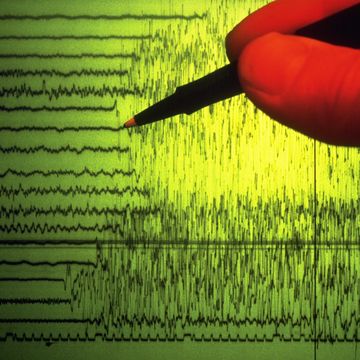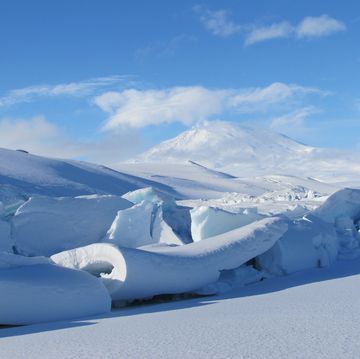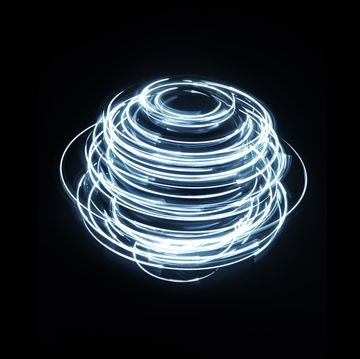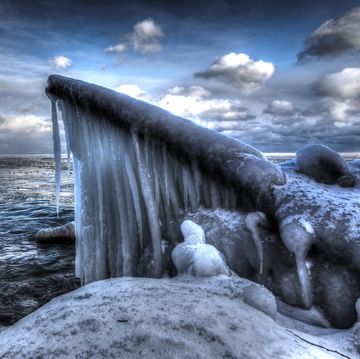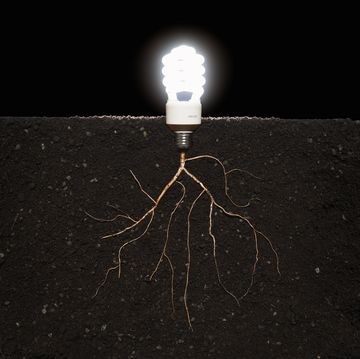On August 15, construction began on what will become the tallest skyscraper in South America—a structure as high as Paris's Eiffel Tower. But this 1,066-foot-tall tower won't be dotting the skyline of Sao Paulo or Buenos Aires. Rather, it will be situated in the middle of the Amazon rainforest.
The Amazon Tall Tower Observatory (ATTO) will monitor weather and take long-term measurements of greenhouse gases to determine how Earth's largest rainforest interacts with the atmosphere and, crucially, whether the Amazon is a net carbon sink (storing it via CO2 and methane) or a net carbon emitter.
Because the tower will be so tall, its data will reflect a large swathe of the rainforest (measurements at lower altitudes are more susceptible to local fluctuations). Paulo Artaxo, one of the Brazilian project coordinators from the University of São Paulo's department of applied physics, tells PM that another advantage of ATTO is its remoteness. The site is 100 miles from the nearest city, Manaus, and largely free of human influence.
"It is the first long-term tropical observatory that is able to analyze the health of [a] tropical ecosystem as important as the Amazonian forest," Artaxo says. "It's essential to monitor the carbon flux as well as aerosols, trace gas concentrations, and radiation balance [the net of the energy entering and leaving an area] in the Amazonian ecosystem because it's a very sensitive ecosystem and it will certainly change a lot in the next decades due to climate change."
Construction should be finished by December, Artaxo says, before the Amazon's wet season sets in. The measurements will be uploaded via satellite internet and available to any researcher who needs them. The ATTO project is a collaboration between the Max Planck Institute (MPI) for Chemistry, in Mainz, Germany, and the National Institute for Amazon Research (INPA) and University of the State of Amazonas, both located in Manaus, Brazil. The MPI for Biogeochemistry, in Jena, Germany, is also a partner on the project. The German and Brazilian governments are splitting the costs of the 8.4-million-euro endeavor.
All Around the World
The world has many observation towers that have been amassing data about Earth's atmosphere for decades. The U.S. is perhaps best known for the Mauna Loa Observatory (MLO) atop the eponymous Hawaiian volcano, which has been collecting data about atmospheric composition and, in particular, anthropogenic CO2 emissions since the 1950s.
John Barnes, station chief at Mauna Loa, says that over the years, scientists at the National Oceanic and Atmospheric Administration realized that "you need the third dimension, altitude. We started flying small airplanes once a week in some locations, and then we also started instrumenting some tall towers in the United States, so that's where ATTO fits in. The Amazon is really an interesting place because it's so large. With all the vegetation, it's very dynamic for carbon dioxide. It is a good site to use. We were able to use just commercial towers, like for television broadcasts, but these guys have to build their own."
But it's not their first attempt. In 2006, German scientists at the MPI for Biogeochemistry, collaborating with Russian scientists at the Sukachev Institute of Forest, Krasnoyarsk, put up a tower similar to ATTO but in Siberia's boreal forest called the Zotino Tall Tower Observatory, or ZOTTO. And at the ATTO site in the Amazon, two structures about 260 feet tall have been taking atmospheric measurements since 2012. The tall tower being built now will be more than four times taller—ATTO will stand taller than the Chrysler building in New York City when completed.
Data from the ZOTTO tower in Russia have allowed scientists to test their hypotheses about whether or not the boreal forest was accumulating carbon. "Siberia has been postulated to be a substantial sink in the context of the Russian emissions," " says Martin Heimann, director of the MPI for Biogeochemistry, "but if you look at the numbers that you get, they are smaller than we thought. So the forests are a small sink, but they're not a large sink."
Jošt V. Lavrič is the leader of a research group at the same institute that analyses data from several monitoring stations, including ZOTTO and one of the shorter structures at the ATTO site. The measurements are complex and variable, he says, which is why it helps to have more and taller towers. "We are only slowly getting there to have datasets [that] can show reliably what is actually going on," he says, emphasizing the danger of making predictions based on small data sets.
"Ultimately, we need to have a long-term observatory," Heimann adds. "We realized also that, of course, the same information is missing from the tropics, and that's why the ATTO project was set up."
Still a Sink?
According to Heimann, whether the Amazon is a net carbon emitter or carbon sink "is a very open question. There [is] a lot of conflicting information right now."
Healthy plants string together carbon from CO2 to form carbohydrates, but in rotting plants, these carbohydrates break down again and the carbon dioxide is released. Plants grow better under conditions of high CO2, Heimann says, but how much of that CO2 remains stored in the plants versus how much is released into the atmosphere or enters the watershed via the Amazon River is unknown. And deforestation of the Amazon, by removing trees that would otherwise take up CO2, increases emissions.
"There are studies saying that the Amazon is overall a sink for carbon and there are other studies showing it's a source, and we have to find this out," Heimann says. ATTO is expected to collect data starting in 2015 and continuing for at least two or three decades.
Still, it's not easy to build a skyscraper way out in the middle of the rainforest. The steel is coming from Southern Brazil by barge and truck, Artaxo tells PM. Wire cables will anchor the tower to the forest floor.
Heimann has not yet visited the ATTO site, but he has visited ZOTTO many times. "If you want to go up to the top, you have to climb ladders," he says. "It takes about one hour; I've done it several times." However, at ZOTTO, most measurements are taken in an underground bunker, using air sucked in from various levels on the tower. In ATTO, most measurements will also be taken at the bottom of the tower, but some instruments will also be taking measurements high up.
Heimann will be there. "I will go when the tower stands for the inauguration," he says, "I hope to go to the top of the tower and have a view of the surroundings."






